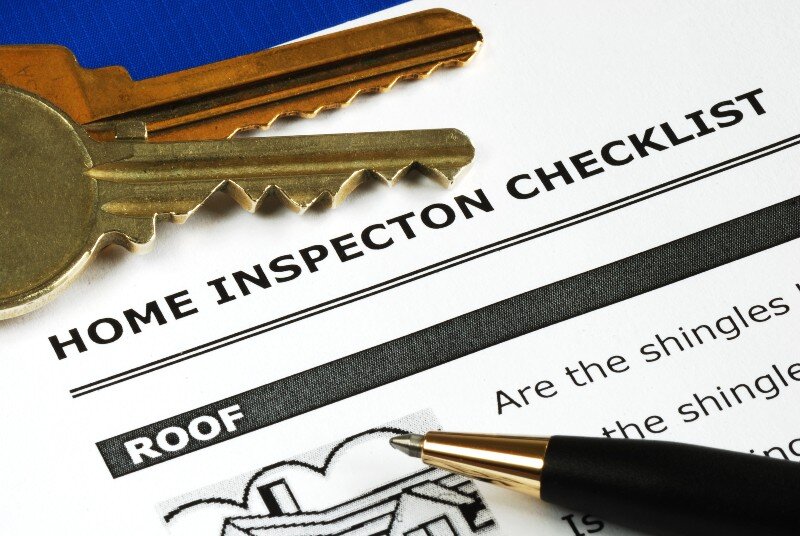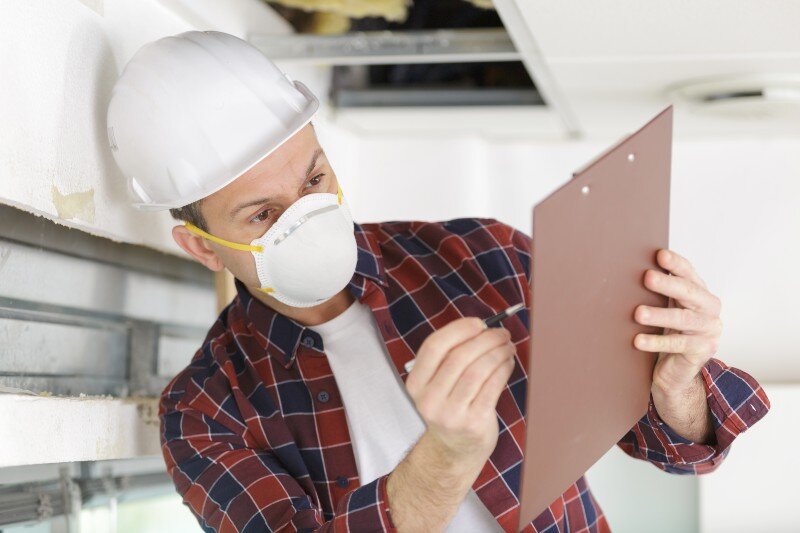
During the home-buying process, you will need to hire a home inspector to complete a professional home inspection in Texas. Home buyers should look over the inspection report to see whether the home is in good condition, whether there are any deal-breakers, or if the house needs minor repairs.
Here, you will learn about the steps part of a complete home inspection checklist. You will want to add an inspection contingency to your real estate purchase and sales agreement. Further, you can ask your real estate agent about the best-certified home inspectors in Texas.
Are you ready to learn more about the full home inspection checklist? If so, let’s get started!
Home Inspection Checklist
Regarding inspecting a house, the first step for new homeowners is finding a qualified home inspector. You should speak with your realtor or check out the American Society of Home Inspectors. As a home buyer, you will need to pay for the home inspection when it takes place. The fees of a home inspection can vary greatly but tends to average out to $300 or up to $450.
The inspector will need to look at any potential structural problems with the house, plumbing problems, and issues with the cooling system or electrical system. For instance, your inspector may find that the house has leaky faucets or the HVAC is on its last legs.
The home inspection can take up to two or three hours, if not longer, depending on the size of the property. It’s best to meet with the inspector during the home inspection to ask questions and learn about the potential red flags.
The home inspection checklist includes the parts of the house the inspector looks at. For instance, the home inspector will need to assess the exterior of the house, the entire basement, the attic, the restrooms, and the kitchen. The inspector will check certain systems in the interior rooms, such as the plumbing, the electrical system, and the HVAC system.
In more detail, the inspector will look at the following features in the exterior of the house.
- Driveways, patios, and garages
- Roof, including gutters and shingles
- Walkways, railings, and steps
- Exterior door frames
- Crawlspace
In the basement, the inspector will focus on the following:
- How well the sump pump works for the water flow
- How effectively the windows work with airflow
- How well the insulation keeps the heat in
- Whether the plumbing works well
On inspection day, a professional home inspector will also look at your attic and how well the ductwork and air conditioning operate. The inspector looks at the roofing, the ventilation, and the insulation. The inspection process also includes looking at the kitchen, bedrooms, and stairways.
That involves looking at the plumbing under the sink, the faucet, exhaust fan vents, the shut-off valves, and the built-in kitchen appliances. Also, the inspector will look at the stoves, cabinets, and countertops. In the bathrooms, the inspector checks out:
- The water pressure
- The hot water temperature
- The caulking in the tub
- The shower head
- The sinks and faucet
- The toilet
- The exhaust fan
- The ceiling
Other important parts of the home inspection checklist include assessing the electrical service panel, the electrical outlets, light fixtures, power switches, and main disconnects. It’s vital to ensure the electrical panel and the cooling unit don’t have any issues, as these features of the house are quite expensive to repair.
The inspector should also check the fireplace, chimney, and flue. The inspector will provide you with a home inspection report, a consumer notice, and the contract for the inspection service.
If the inspector does find any issues, you will need to contact the sellers and show them the home inspection report. The sellers will have to make any necessary repairs or decrease the home sale price if you have an inspection contingency in the real estate transaction contract.
Further, the home sellers should provide a seller’s disclosure statement about specific issues of the real estate property, such as lead paint.

Home Renovations Checklist
Home sellers may also want to renovate certain parts of the house before putting it on the real estate market. For instance, sellers can gain the largest increase in their home’s value by renovating their bathrooms and kitchen.
A home renovations checklist should include the following steps.
- Hiring home inspectors to check the foundation, siding, roof, doors, windows, electrical system, and plumbing of the house
- Declutter and get rid of all the waste you’re planning to remove, including old cabinets, tiles, and more
- Fix the windows and doorways, add support beams, and repair the structure of the house
- Repair the HVAC system, air filters, plumbing, and electrical issues
- Add insulation inside the walls and attic before hanging the drywall
- Install new windows, baseboards, molding, and trim
- Repaint the walls if you see flaking paint
- Put in new flooring
Along with these home renovations, you should consider completing landscaping work to improve the curb appeal of the house.
Home Repairs Checklist
The home inspector should also keep an eye out for asbestos and termites as well as check how well the carbon monoxide detectors and smoke detectors work. The home repairs checklist may get extensive after an inspection, but there are things you shouldn’t fix when selling a house.
That may include some cosmetic flaws, small cracks in the sidewalks or driveway, and a grandfathered-in building code issue. As long as the house adhered to building codes when it was constructed, future violations are grandfathered-in.
Yet, there are plenty of things to repair before putting your home on the real estate market. The home repairs checklist should include:
- Fixing leaky faucets and water damage
- Replacing coolant or freon in the fridge
- Fixing loose hinges
- Replacing stuck or broken kitchen drawers/cabinets
- Replacing broken knobs or handles
- Repairing or replacing broken shower heads
- Remove any materials clogging drains
- Resurface peeling acrylic on your bathtub
- Repairing a broken garage door
- Fixing a malfunctioning septic tank
Do you have a broken exhaust fan in the bathroom? You’ll likely need to repair it before putting your house on the market. Also, replace any cracked shower tiles in the restrooms.
Do you have dents and holes in the walls? You’ll need to fix that in the drywall and repaint the walls. Out of all the cheap ways to increase home’s value, repainting the interior and exterior of the house may be the best choice.
You may also want to replace cracked or chipped flooring. If your carpeting is torn, you can replace it. However, if the carpets have stains, a steam cleaning may do the trick.
Further, make sure to fix any issues with the HVAC system and your water heater. Check to see that the electrical panel and circuit breakers work well. For your home exterior, you may need to repair the following.
- Front and back doors, along with door handles
- The roof, eaves, and gutters
- The foundation and any retaining walls
- Decks or patios
- Broken or water-damaged fencing
Cleaning Checklist
You will also need to get your home ready for viewings by deep cleaning and decluttering the place. A clean and clutter-free area is much more attractive to buyers. They’ll also feel there’s enough room for their belongings when you clear out more space.
Your cleaning checklist should include paying attention to the most important rooms in the house, such as the living room, dining area, kitchen, and bathroom(s). Use spray cleaners to wash the countertops in the kitchen and restrooms. You will also need to sweep and mop the floors.
Get rid of mildew stains on shower doors and shower curtains. Also, remove the grout between tiles. You can do so by using liquid bleach or cleaning sprays with bleach.
Further, you will need to clean the windows and vacuum both the carpets and curtains. Dust and deep clean the house to ensure you remove all irritants from the air. Clean off any grime and fingerprints you find in the house. You’ll need to follow these simple steps as part of your cleaning checklist.
Conclusion
When buyers follow the home inspection checklist, they will learn if their new home has potential problems like clogged gutters or a broken water heater. At the same time, they may find the house is in great condition and has an excellent electrical system.
Sellers should also complete specific renovations to improve their home’s value and follow a cleaning checklist to get more bids on the property. After a home inspection, sellers should complete relevant repairs if there is an inspection contingency in the purchase and sales agreement.
However, if you’re selling a house in Texas and want to avoid a home inspection, you can sell the property in its as-is condition to a cash buyer. Also, if you’re looking to sell a house fast in Kirby, you should seek out cash home buyers in Texas. Cash buyers don’t need a mortgage approval and can complete a home sale in only a few short weeks.
We buy houses San Antonio residents love, so give us a call today!
